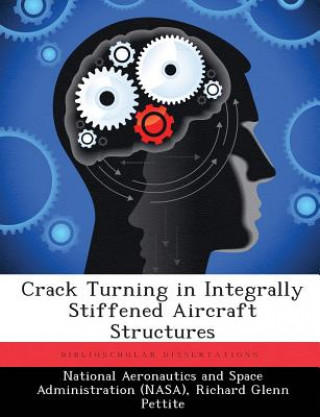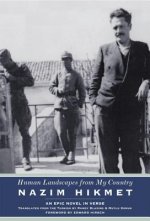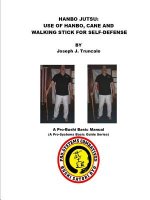
Code: 08287074
Crack Turning in Integrally Stiffened Aircraft Structures
by Richard Glenn Pettite
Current emphasis in the aircraft industry toward reducing manufacturing cost has created a renewed interest in integrally stiffened structures. Crack turning has been identified as an approach to improve the damage tolerance and f ... more
- Language:
 English
English - Binding: Paperback
- Number of pages: 238
Publisher: Biblioscholar, 2013
- More about this

56.37 €
RRP: 57.49 €
You save 1.12 €

In stock at our supplier
Shipping in 15 - 20 days
You might also like
-

Life, Love, and Letting Go
9.07 € -18 %
Give this book as a present today
- Order book and choose Gift Order.
- We will send you book gift voucher at once. You can give it out to anyone.
- Book will be send to donee, nothing more to care about.
More about Crack Turning in Integrally Stiffened Aircraft Structures
You get 143 loyalty points
 Book synopsis
Book synopsis
Current emphasis in the aircraft industry toward reducing manufacturing cost has created a renewed interest in integrally stiffened structures. Crack turning has been identified as an approach to improve the damage tolerance and fail-safety of this class of structures. A desired behavior is for skin cracks to turn before reaching a stiffener, instead of growing straight through. A crack in a pressurized fuselage encounters high T-stress as it nears the stiffener--a condition favorable to crack turning. Also, the tear resistance of aluminum alloys typically varies with crack orientation, a form of anisotropy that can influence the crack path. The present work addresses these issues with a study of crack turning in two-dimensions, including the effects of both T-stress and fracture anisotropy. Both effects are shown to have relation to the process zone size, an interaction that is central to this study. Following an introduction to the problem, the T-stress effect is studied for a slightly curved semi-infinite crack with a cohesive process zone, yielding a closed form expression for the future crack path in an infinite medium. For a given initial crack tip curvature and tensile T-stress, the crack path instability is found to increase with process zone size. Fracture orthotropy is treated using a simple function to interpolate between the two principal fracture resistance values in two-dimensions. An extension to three-dimensions interpolates between the six principal values of fracture resistance. Also discussed is the transition between mode I and mode II fracture in metals. For isotropic materials, there is evidence that the crack seeks out a direction of either local symmetry (pure mode I) or local asymmetry (pure mode II) growth. For orthotropic materials the favored states are not pure modal, and have mode mixity that is a function of crack orientation.
 Book details
Book details
Book category Books in English Society & social sciences Education
56.37 €
- Full title: Crack Turning in Integrally Stiffened Aircraft Structures
- Author: Richard Glenn Pettite
- Language:
 English
English - Binding: Paperback
- Number of pages: 238
- EAN: 9781288911646
- ISBN: 9781288911646
- ID: 08287074
- Publisher: Biblioscholar
- Weight: 431 g
- Dimensions: 246 × 189 × 13 mm
- Date of publishing: 12. March 2013
Trending among others
-

Cambridge IGCSE (R) & O Level Complete Chemistry: Student Book Fourth Edition
42.50 € -

Cambridge IGCSE (R) & O Level Complete Physics: Student Book Fourth Edition
41.60 € -

Cambridge IGCSE (R) & O Level Complete Biology: Student Book Fourth Edition
39.20 € -

KS3 Maths 10-Minute Weekly Workouts - Year 8
8.07 € -7 % -

Oxford IB Diploma Programme: IB Economics Course Book
62.25 € -

geog.2 Workbook
12.36 € -

OET Preparation
9.77 € -

Pearson Edexcel International GCSE (9-1) English Language B Student Book
50.38 € -

KS3 Maths 10-Minute Weekly Workouts - Year 7
8.07 € -7 % -

Oxford IB Diploma Programme: IB Theory of Knowledge Course Book
57.96 € -

Powerful Teaching: Unleash the Science of Learning
26.23 € -25 % -

1000 TRIOS or gapped sentences for Cambridge Advanced and Proficiency Exams
24.24 € -

Jim Trelease's Read-aloud Handbook
16.85 € -26 % -

The End of Education
13.46 € -25 % -

Deep Healing and Transformation
48.29 € -

ESL/ELL Teacher's Survival Guide: Ready-to-Use Strategies, Tools, and Activities for Teaching En glish Language Learners of All Levels, 2nd Edition
27.63 € -26 % -

Donny's Unauthorized Technical Guide to Harley Davidson 1936 to Present
43 € -23 % -

Towards a Philosophy of Education in Modern English: Volume 6 of Charlotte Mason's Series
15.36 € -

AQA GCSE German Higher Practice Papers
15.26 € -

All About Diamonds
26.33 € -

Business Partner B1 Workbook
17.45 € -7 % -

Business Partner B1+ Workbook
16.85 € -2 % -

Business Partner B2 Workbook
16.85 € -2 % -

Blue Book of Grammar and Punctuation: An Easy- to-Use Guide with Clear Rules, Real-World Examples , and Reproducible Quizzes, Twelfth Edition
15.16 € -27 % -

Speed and Accuracy: Multiplication
8.57 € -

Grade 9-1 GCSE Maths AQA Revision Question Cards - Higher
9.97 € -4 % -

Positive Discipline Tools for Teachers
14.06 € -26 % -

Speed and Accuracy: Division
8.57 € -

Pearson Edexcel AS and A level Mathematics Statistics & Mechanics Year 1/AS Textbook + e-book
17.65 € -

(ISC) SSCP SG & SSCP Practice Test Kit, 3e
82.71 € -4 % -

Motivation and Reinforcement
46.39 € -

Read Write Inc. Phonics: Red Ditty Book Bag Books (Mixed Pack of 10)
73.73 € -

Imagine If...
10.97 € -22 % -

OET Reading Subtest Preparation
12.46 € -7 % -

Vol 2 Blackletter Lettering Adventures
25.33 € -1 % -

AS & A Level Maths For Dummies
17.35 € -26 % -

Forensic Linguistics Articles
14.36 € -1 % -

CompTIA Security+ Review Guide - Exam SY0-601
24.84 € -23 % -

Practical Guide on Veterinary First Aid using Homeopathy
14.66 € -2 % -

Abolition of Man
18.65 € -

Dancing Heads
12.06 € -24 % -

Human Landscapes from My Country
28.43 € -21 % -

Corrected Squares of The Book of Abramelin
499.60 € -

Hanbo Jutsu: Use of Hanbo, Cane and Walking Stick for Self Defense
11.37 € -

Reading Mind - A Cognitive Approach to Understanding How the Mind Reads
21.44 € -27 % -

Freiarbeitsmaterial für die Grundschule - Deutsch - Klasse 1/2
22.64 € -4 % -

English Language & Literature WORKBOOK: York Notes for GCSE (9-1)
8.87 € -9 % -

North Korea's Military Threat
25.24 € -

Release Your Inner Drive
14.96 € -18 %
Collection points Bratislava a 2642 dalších
Copyright ©2008-24 najlacnejsie-knihy.sk All rights reservedPrivacyCookies


 15549 collection points
15549 collection points Delivery 2.99 €
Delivery 2.99 € 02/210 210 99 (8-15.30h)
02/210 210 99 (8-15.30h)